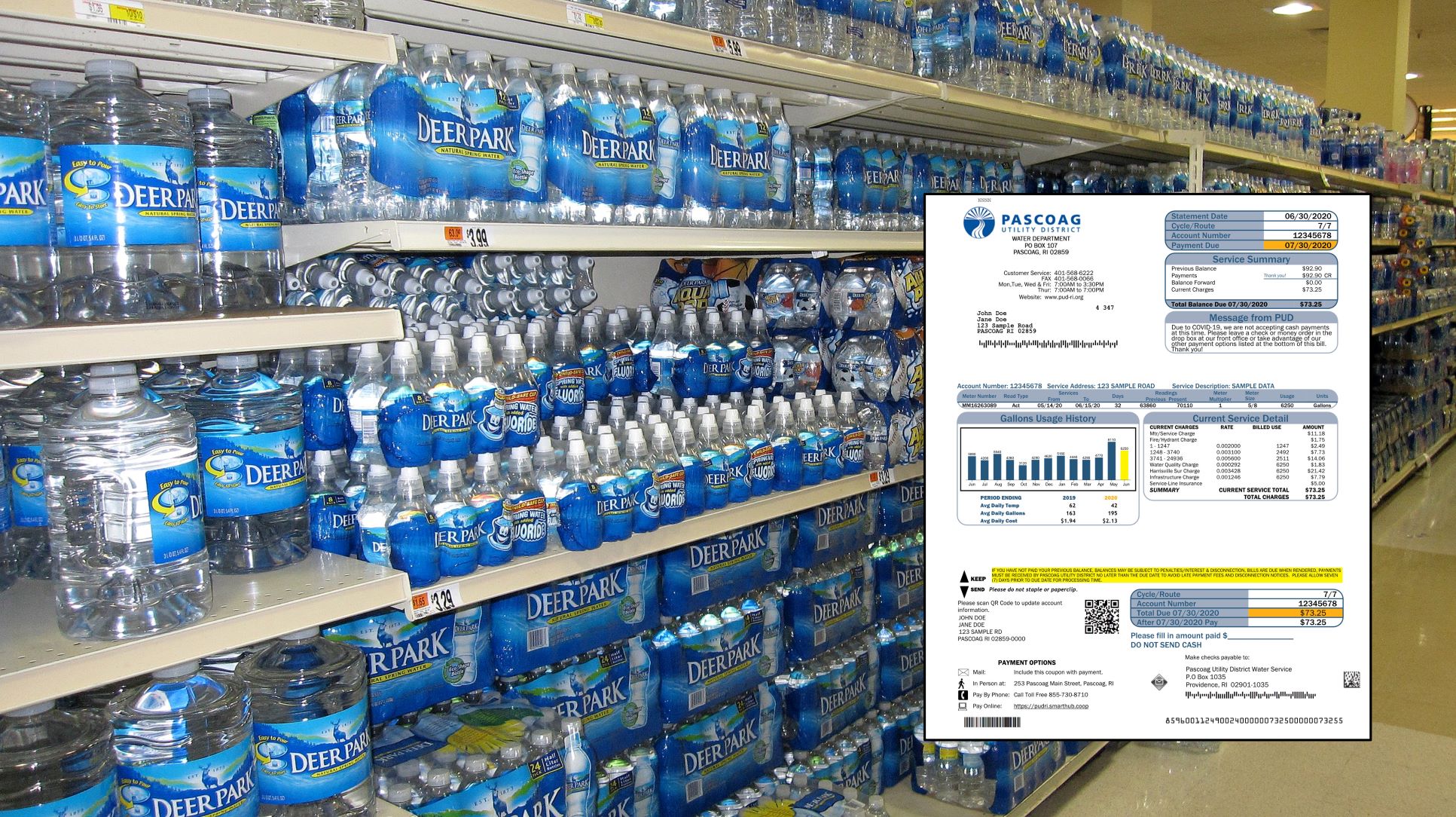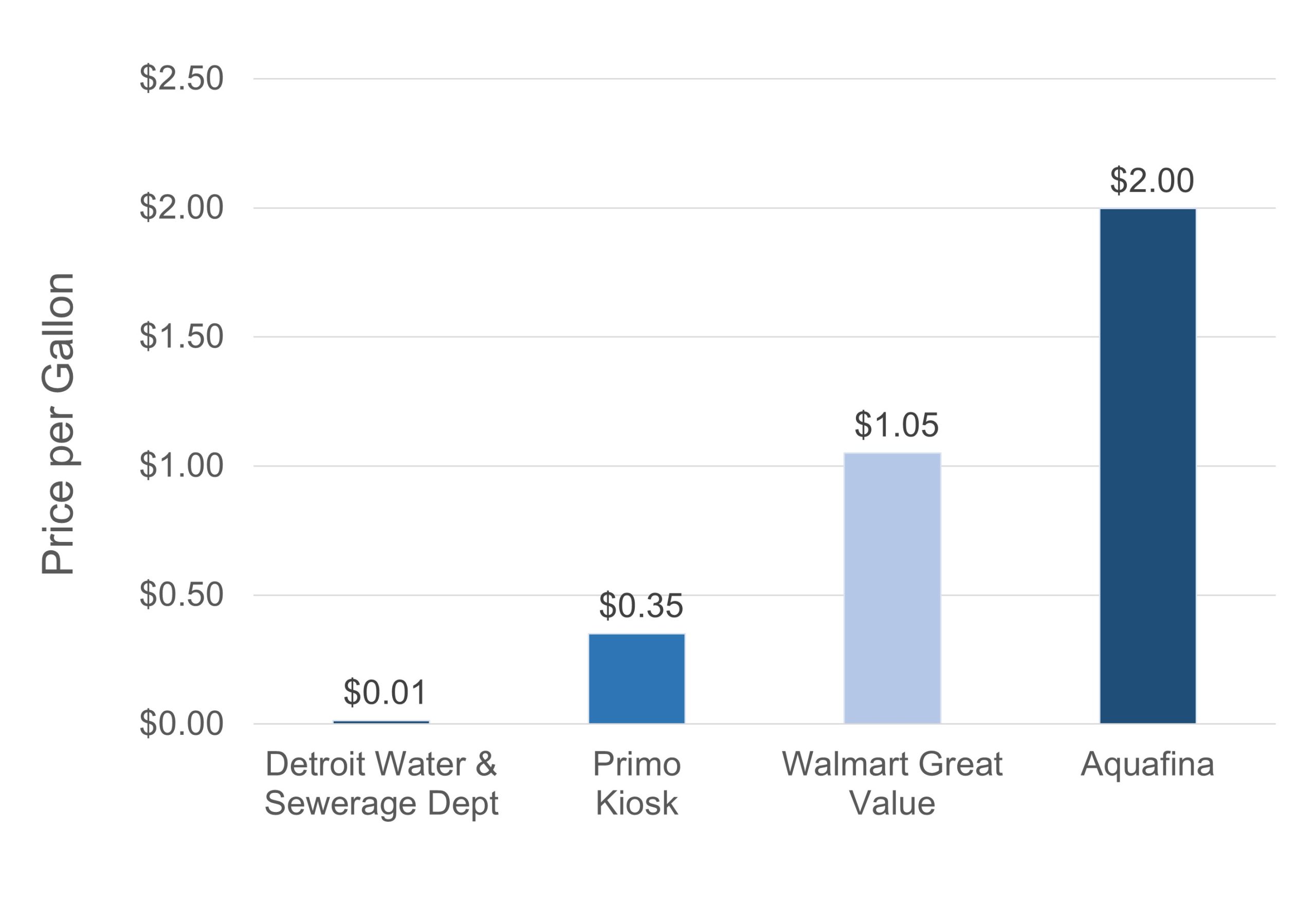The first pillar of affordability is Quality
So long as water and sewer services operate on a fee-for-service basis, ensuring that these critical services are affordable will remain a challenge. The problem is especially thorny in an era of rapidly rising prices and growing income inequality. No single policy or program is sufficient to meet this challenge; affordability is a complicated problem that calls for a comprehensive strategy.
This post is the first in a series outlining five pillars of affordability strategy for water/sewer utilities. These pillars are my way of organizing and distilling the body of available empirical research on water affordability, along with my observations in 25 years of working with utilities large and small. Befitting the name “pillars,” each is a foundational part of an overall strategy to address affordability. Together, they form a framework for American water/sewer utilities to address affordability with the best mechanisms currently available to them.
These pillars are constructed to work within the existing legal, political, and organizational constraints under which American utilities operate. That is, I assume that water systems rely primarily on rate revenue, and that water/sewer utilities will continue to be owned and operated by a mix of municipal governments, special districts, investor-owned firms, and nonprofit cooperatives. There will be no calls for Congress to spend a trillion dollars, to nationalize water systems, or to eliminate metered water service in favor of tax-funded free water.
Instead, my goal is to give utility leaders, policymakers, and advocates a practical way to think about and manage affordability, right here and now. Leaders who build their affordability strategy on these five pillars can be confident that they are doing the best that they can based on what we know today with available tools.
Quality is the first, most important pillar of affordability. Paradoxically, building this pillar of affordability might mean charging higher prices. Understanding why requires thinking beyond water bills to the realities of consumer behavior.
Expensive water and really expensive water
As some readers of this blog might know,* in April 2000 the tap water in a small Ontario town called Walkerton was contaminated with e-coli. Thousands of people got sick and seven died as a direct result of the contamination. Walkerton’s water contamination touched off a national conversation about drinking water regulation across Canada. In political science terms, Walkerton was a focusing event that suddenly put a previously obscure issue onto the public policy agenda.
But Walkerton turned out to be a focusing event for consumer behavior, too. Bottled water sales surged across Canada following the Walkerton disaster—even thousands of miles away—as fear of contamination caused Canadians everywhere to abandon tap water in favor of far more expensive bottled water. The Flint Water Crisis prompted a similar consumer response in the United States 15 years later, as Flint’s plight changed Americans’ perceptions of their water across the country. Economists call this behavior defensive spending, as consumers choose expensive bottled water due to perceived health risks from tap water.
This defensive spending has serious implications for affordability because poor tap water quality or unreliable service drives people to commercial alternatives. Water affordability isn’t just about utility bills—it’s about total household expenditures on drinking water. A case of generic commercial bottled water from Walmart works out to cost $1.02 per gallon on a volumetric basis. The Cleveland Clinic recommends that individuals drink 0.7-1.0 gallons of water each day. To meet this need, a family of four that relies on bottled water spends $84-120 a month for drinking water. By comparison, basic tap water in the U.S. averages less than one cent per gallon. Put another way, one month’s worth of bottled water for a family of four costs more than double the typical monthly water bill for basic service. Here’s how the comparative value looks in Detroit, for example—a city where affordability has been a longstanding concern:
Critically, that value proposition depends on excellent tap water quality.
Bottles for the poor
A large and growing body of empirical research finds that, despite its high price, bottled water consumption in the United States is inversely related to income: bottled water is most popular among low-income households, and more affluent Americans are likely to drink tap water. As I’ve observed before, Supplemental Nutrition Assistance Program (SNAP) participants already spend about 1.2% of their household food budgets on bottled water, which works out to more than a billion federal dollars a year spent on the stuff. Concern over tap water quality is a principal reason that consumers choose to drink bottled water. For example, trust in tap water strongly correlated with drinking water choice in the U.S. Water Alliance’s 2020 and 2021 Value of Water Survey:

Logistic regression estimates, controlling for sex, race, ethnicity, and income. Thin bars represent 95% confidence intervals.
My forthcoming book (with Samantha Zuhlke and David Switzer) affirms these patterns, and finds that customers who do not trust their tap water due to Safe Drinking Water Act (SDWA) violations, main breaks, low pressure, or other service failures will stop drinking tap water. That distrust is most pronounced for those who can least afford the hefty premium that bottled water sellers charge.
Quality über alles
Providing and maintaining high-quality tap water service is the single most important thing any utility can do for affordability. No other affordability efforts matter if tap quality is not excellent. Achieving this goal requires investing in water infrastructure and operations. Any service failures that occur due to delayed or foregone improvements will impact low-income customers most severely because: a) infrastructure is generally older in low-income areas, leaving lower-income residents vulnerable to infrastructure failures; and b) low-income customers are likely to respond to infrastructure failures by purchasing expensive bottled water.
Proactive capital investment, rigorous maintenance, and sound utility operations are therefore paramount to affordability. Sometimes these investments will require raising rates. Nonetheless, utility managers and policymakers must never forego upgrades or defer needed replacements in the name of “affordability” because every main break or SDWA violation erodes trust at the tap and sends customers running to the bottled water aisle. A deep commitment to water quality pays off in affordability for customers who can confidently consume tap water and so avoid spending orders of magnitude more for commercial bottled water.
Communicating quality
Oh, one more thing: to realize the affordability advantages of excellent tap water service it’s not enough for the water to be great; the public must know that their tap water is great. Educating the public about the quality and value of tap water—and its alternatives—is part of an effective affordability strategy. Utilities should show how hard they work to deliver great tap water and provide the evidence that their product is great. Comparisons with bottled water are entirely appropriate in this regard, since customers evidently make such comparisons and commercial drinking water companies certainly do.
Done right, public communication about tap water quality isn’t propaganda, but it is marketing of a sort. People who have access to excellent tap water shouldn’t waste their money in the mistaken belief that they must spend defensively—especially the low income customers who face real affordability challenges. The most affordable, high-quality drinking water should always flow from a tap.
Next time I’ll introduce the second pillar of affordability: efficiency.
*I recently learned that I have a good number of Canadian readers and followers. I’ve gone international, eh?


